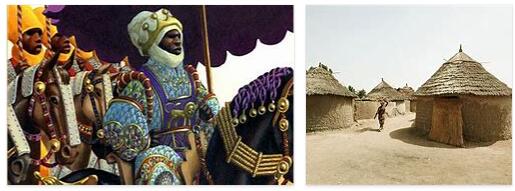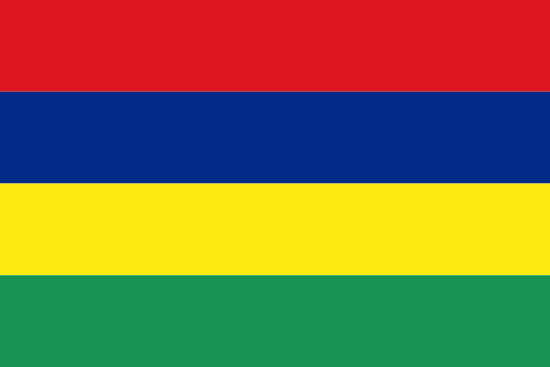Mali History
Settled since prehistoric times, the great empires of Gana and Songhai as well as the empire of Mali, founded by the Malinke in the 13th century, developed on the territory of today’s Mali. Sundjata Keita (around 1230–55), who is considered the first emperor of Mali, defeated the king of the Sosso (a Soninkevolk) in 1235 and conquered western Sudan between the Gambia, the Fouta-Djalon and the city of Djenné on the Niger. Under Emperor Kankan Musa (1312–35), Mali expanded its power from the mouth of the Gambia to Gao on the Niger knee. In the 15th century, Mali shrank to a small state under the attacks of the Tuareg and Songhai. Instead, the Songhai, whose capital was Gao, came under Ali (around 1465-92) and Mohammed (1493–1528) assumed hegemony in West Africa; among them, the cities of Djenné and Timbuktu rose to become important trading centers. With the invasion of Moroccan troops in 1591, whose leaders wanted to control the trade and wealth of western Sudan, the Songhai Empire collapsed.
South of the Moroccan territory, which was soon limited to the area around Timbuktu, a Bambara state emerged after 1660 around the city of Ségou, which reached its peak under Biton Kulibali (1712–55). The Islamic reform movement of the 19th century, which encompassed large parts of Africa, triggered the establishment of new states. In 1818 Amadu Hammadi Bubu († 1844) subjugated the Bambara and conquered Timbuktu and Djenné. In 1850 Omar Saidou Tall (* 1797, † 1864) calledfor the establishment of a new Islamic empire; he conquered Ségou and Masina, but could not finally subjugate either the Bambara or the Fulbe. Omar’s son and heir Ahmadu (* 1833, † 1898) came into conflict with France after 1880. After French troops had captured Bamako in 1883 and the Bambara capital Ségou in 1890, Ahmadu fled to Sokoto. In 1894 the French completed their conquest of what is now Mali with the capture of Timbuktu. The colony of Soudan (French Sudan) was founded in 1895 and incorporated into French West Africa in 1904. When autonomous governments were formed in all French colonies south of the Sahara in 1958, the Union Soudanaise – Rassemblement Démocratique Africain (US-RDA, German Sudanese Union – African Democratic Collection Movement) set itself up as the leading party under M. Keita through. In 1959, French Sudan merged with Senegal to form the Mali Federation, which gained independence on June 20, 1960, but broke up on August 20, 1960. Thereupon French Sudan proclaimed itself the independent Republic of Mali on September 22nd, 1960; Keita became president, the US-RDA unity party with a Marxist orientation.
Mali left the franc zone in 1960. Politically, Keita took a socialist course and worked closely with the presidents of Ghana ( K. Nkrumah ) and Guinea ( A. S. Touré ) as well as with the communist governments in Europe and Asia. The economic contacts with Western Europe remained, however.
On November 19, 1968, Keita was overthrown in a military coup. In 1969, Lieutenant Moussa Traoré (* 1936, † 2020) prevailed within the Comité militaire de libération nationale (CMLN, German Military Committee of National Liberation). He united the offices of heads of state and government and ruled authoritarian. Traoré returned to the alliance with France (re-entry into the franc zone) and to an economic policy adapted to the world market (while maintaining the state sector in the economic organization). In view of the catastrophic drought in the Sahel in 1972-74, however, he did not succeed in improving the economic and social situation decisively. Mali became one of the largest recipients of food aid in Africa. With a new constitution (1974), the establishment of the unity party Union Démocratique du Peuple Malien (UDPM, German Democratic Union of the Malian People) in 1979 and elections, the military regime tried to create a politically legitimized basis. In the presidential elections of 1979 and 1985, Traoré was, since 1979 also Secretary General of the UDPM, confirmed as President of the Republic. At the end of 1985 the border dispute with Burkina Faso (which had already broken out in 1974) flared up again. In its judgment of December 22nd, 1987, the International Court of Justice proposed the division of the Agacher Strip (later recognized by both states).
After mass demonstrations and demands for democracy, reform-minded militaries overthrew Traoré on March 25, 1991. Under the chairmanship of Lieutenant Colonel A. T. Touré, a Comité de Transition pour le Salut du Peuple (CTSP, German Transitional Committee for the Rescue of the People) took power.
After the introduction of a multi-party system, the Alliance pour la Démocratie au Mali – Parti Africain pour la Solidarité et la Justice (ADEMA – PASJ) won an absolute majority in the general elections in February / March 1992. On June 8, 1992, President Alpha Omar Konaré (* 1946), who was democratically elected for the first time in April 1992, took office.assumed office from ADEMA – PASJ (re-election May 1997). In the run-up to the presidential elections, the government and the Tuareg signed a national pact on April 11, 1992, which was intended to end the Tuareg rebellion that broke out in the north of the country in the early 1990s and the influx of refugees it triggered. In 1994, however, there were again bloody conflicts between the Tuareg and the black African majority. In 1996 the clashes were initially settled with the mediation of Algeria and European states.
Since Konaré could no longer run after two terms in office, the non-party Touré prevailed in the presidential elections in May 2002. In 2006 representatives of the Tuareg and the Malian government signed an agreement in which the Tuareg renounced their autonomy and at the same time assured the development of the northern region of the country. Nevertheless, there were renewed arguments in 2007/08. In the 2007 presidential election, Touré was confirmed in office.
Activities of the terrorist organization “al-Qaida in the Islamic Maghreb” (AQIM), which Mauritanian troops intervened in Mali in 2011, became a security problem. With Cissé Mariam Kaidama Sidib (* 1948), the appointment of a female head of government took place in April 2011 for the first time in the history of the country.



